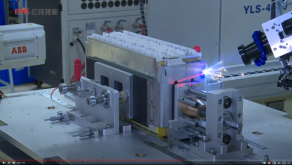Pitownpi
New Member
- Joined
- Feb 5, 2021
- Messages
- 39
Most impressive build I've seen yet, very polished high quality over all the plywood bird houses I've seen.Hello guys.
I was in the same situation a month ago, and after my first top balance discovered that the cells can swell up a lot, for example, this cells use to sit perfectly flat, and this happened after a low C rate charge, a couple of mm of separation:
View attachment 15534
Its not that bad and its between spec, but aside from the recommendation from EVE of adding pressure, the nordkyn desing web also recommends a fixture to prevent "delamination" from the expansion / contraption cycles.
Cells are probably going to be OK with, or without it..., but i invested a lot of $$ on my system and want to make it last as long as possible. So if i can spend a couple of days and some dollars to make a fixture and just maybe get 500 - 1000 more cycles, ill do it.
This is some solutions from marinehowto and nordkyn desing:
View attachment 15535View attachment 15536
Very easy to make, only problem would be the heat disipation that migh drecrease the lifespan a little bit (Probably neglilible with our lower C rates)
I decided to make a full enclosure:
View attachment 15537
View attachment 15538
View attachment 15539
And as you can see, i have 4 x threaded rods in the design, so i can put the 300KGF if i want, in practice i just compress them a bit as i dont know how to calculate or measure that... i guess you can calculate that with a torquimeter or just measure with a pressure plate.
- Have aluminum flatbars and "T" extrusions to allow some airflow betwen cells, so heat wont be much of a problem.
- Can mount both horizontallly and vertically, also could fix to the wall.
- Can "easily" transport the full pack to connect between systems. (Probably not needed for a lot of people, but usefull for me).
- Can easily change the BMS, as the leads are connected to a connection bar.
- Looks better!
The cell walls stay completely flat with the middle flatbars and resistant aluminum structure in both sides.
So far im happy with the build!
I really like the middle flat bars to allow air flow. What are the dimensions of the complete box?
I'd buy it ready to go out with your design. my batteries are on order. what's the thickness of your aluminum spacers, I'm wanting exactly this setup!




